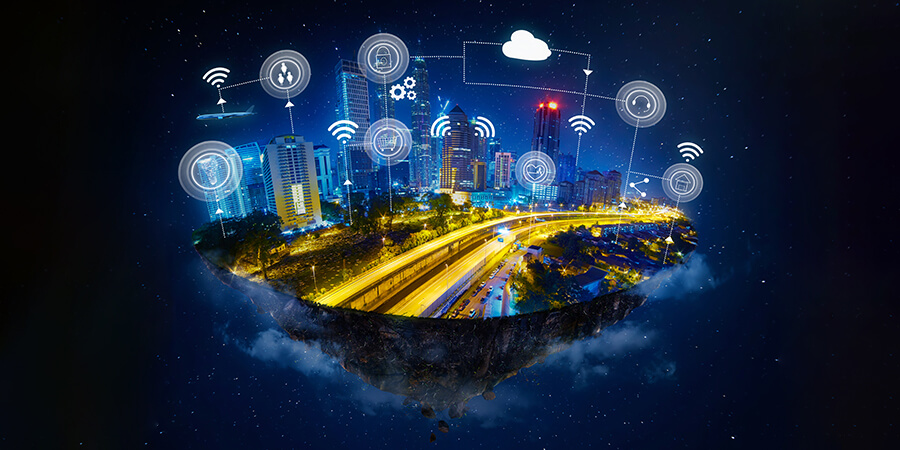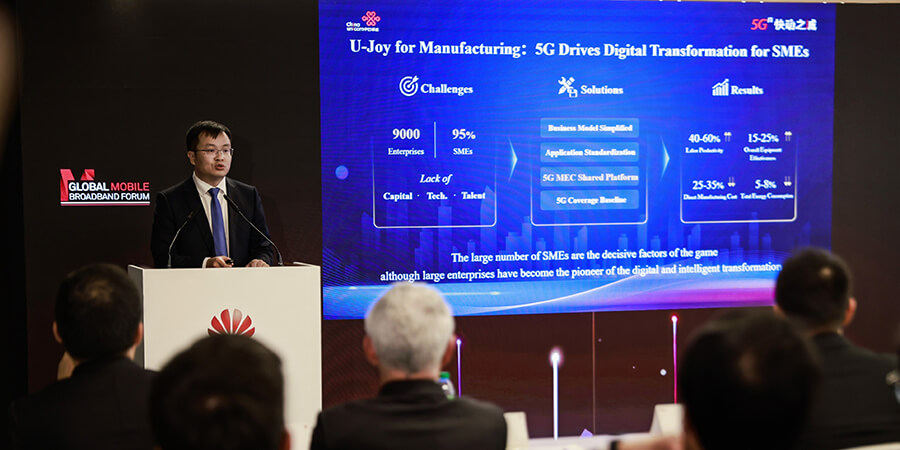The world’s population that resides in urban areas is projected by the United Nations to reach 68% by 2025. Such numbers are compelling forward-thinking cities to harness technology, including the Internet of Things (IoT), to cultivate smart infrastructure and services.

Reports and Coverage
How Generative AI Will Change the Game for Telcos
BSS/OSS integration will be critical for telecommunications operators to reap the full benefits of this transformative technology.
By Ari Banerjee, senior vice president of strategy, Netcracker Technology
His Highness Mohammed bin Rashid Al Maktoum Officially Opens GITEX GLOBAL
His Highness (HH) Sheikh Mohammed bin Rashid Al Maktoum, Vice President and Prime Minister of the UAE and Ruler of Dubai, officially opened the 43rd edition of GITEX GLOBAL (a large scale innovative exhibition that aims to elevate business, economical, societal and cultural sectors) at the Dubai World Trade Centre (DWTC).
Redefining an Industry With Generative AI
Anthony Goonetilleke, Group President, Technology, and Head of Strategy, Amdocs
U-Joy Cities in Guangdong: A Brighter Future With 5G-A
During the Day 1 of the Huawei Global MBB Forum 2023, Telecom Review attended the 5G Industry Summit, which focused on the theme of “Unleashing 5G Potential for Industry Acceleration and Business Success.”
Lead Digital Transformation Innovation, Unleash Infinite Possibilities
Today, we are all living in a digital era where the competition between telecom operators is becoming fiercer by the minute. They are under a lot of pressure to optimize their services and products to provide the best offer to their customers, while improving their revenue at the same time. Digital transformation has thus become a necessity for the telco carriers, in order to cope with the rapid technological evolution.
Zain KSA and Huawei Forge a Strategic Alliance for Green Technology Advancement
During the Global Mobile Broadband Forum 2023, Zain KSA signed a memorandum of understanding (MoU) with Huawei, reflecting a significant milestone in the field of green technology collaboration. This agreement solidifies the collaboration between Zain KSA and Huawei as they work together to drive the widespread adoption of green technology within Zain's operational framework, networks and facilities.
Huawei Unveils LampSite X to Revolutionize Indoor Digital Experience
At the Global Mobile Broadband Forum (MBBF) 2023, Huawei's Yang Chaobin, a Board Member and President overseeing ICT Products and Solutions, introduced LampSite X, an innovative 5G indoor digital solution set to usher in a new era of indoor connectivity and intelligence.
China Mobile International: Striding Towards a Smarter Future
Countries across the Middle East and North Africa region are investing to modernize their infrastructure through smart technologies. The region is embracing the shift to 5G and enabling technologies like cloud computing, artificial intelligence (AI), the Internet of Things (IoT) and augmented and virtual reality.
Nokia Supports du in Extending High-Capacity Microwave Backhaul Over Long Distances
This case study describes how Nokia helped du trial and subsequently deploy a multiband microwave backhaul solution combining high-capacity E-Band radios with the extended reach of lower frequency links in Dubai World Islands.

















